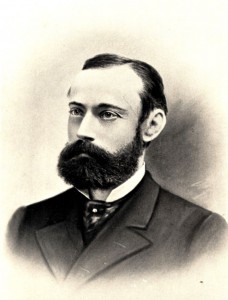For the past six months, I have been devoting much of my time as Metadata Librarian at NEHGS to making older genealogies from our Boston research library available online in the NEHGS Digital Library and Archive. These genealogies, most of them originally published in the nineteenth and early twentieth centuries, are rare or unique to NEHGS, and have not been previously available online.
By adding them to our Digital Library, we hope that we can not only increase access to these hard-to-find resources, but also better preserve the physical books themselves, which are often suffering from the effects of brittle, acidic paper and deteriorating bindings. We have added items ranging from short, privately printed pamphlets – such as the five-page Family and Antecedents of William Henry Rayner and Jeanie Ann Balmer – to longer, more comprehensive treatises, like Henry Stoddard Ruggles’s The Ruggles Family in England and America.
So how do we find rare and unique genealogies from our collection to digitize? In the past sixth months, most of the new additions to our Digital Library came to our attention through a longstanding (if recently restarted) project to reclassify the “Old Class” section of our library and reunite it with the rest of our research collection. Like a lot of American libraries with lengthy histories, our research library has long had “a collection divided”: while the majority of our collection is arranged using the Library of Congress Classification (LCC) – the classification system used by most American academic and research libraries – we also have a large collection of books arranged using an older, in-house classification system, created before the advent of Library of Congress call numbers , which we at NEHGS refer to as the “Old Class.”
No part of our library is more dramatically affected by this divide than our collection of genealogies of American families, on the seventh floor: about 21,000 of these books have Library of Congress call numbers, while the remaining 3,000 sit in a separate section with Old Class numbers. In the past year, we’ve restarted the process of reuniting these two long-sundered parts of the collection by assigning the Old Class genealogies call numbers from the LCC system.
In addition to making it easier for visitors to our library to browse all the genealogies we have on a given family at once, the project also gives us an opportunity to identify rare genealogies from our collection that are not available online from other providers. Indeed, many of these older genealogies – especially some of the shorter pamphlets – were privately published and not widely distributed. As a result, NEHGS is sometimes the only library that holds a copy of the resource. In these cases, we are particularly happy to be able to preserve a digital copy and put it online so that it can reach a wider audience, now and for years to come.
You can browse through all of our digitized family histories in the NEHGS Digital Library and Archive.
Share this:
About Emily Baldoni
Emily Baldoni is the Technical Services/Metadata Librarian. She is responsible for creating, maintaining, and enriching metadata for NEHGS print and digital collections. Emily is originally from Normal, Illinois, and joined the NEHGS staff in 2013. She has an M.A. in Comparative Literature from Harvard University and an M.S. in Library and Information Science from Simmons College. Prior to joining the staff at NEHGS, Emily worked for Harvard College Library and EBSCO Information Services.View all posts by Emily Baldoni →
